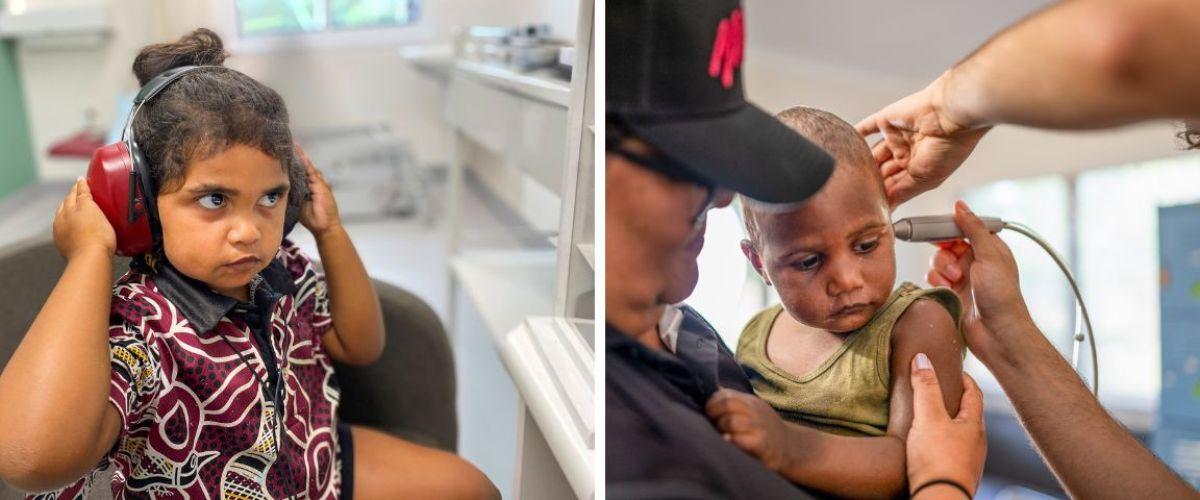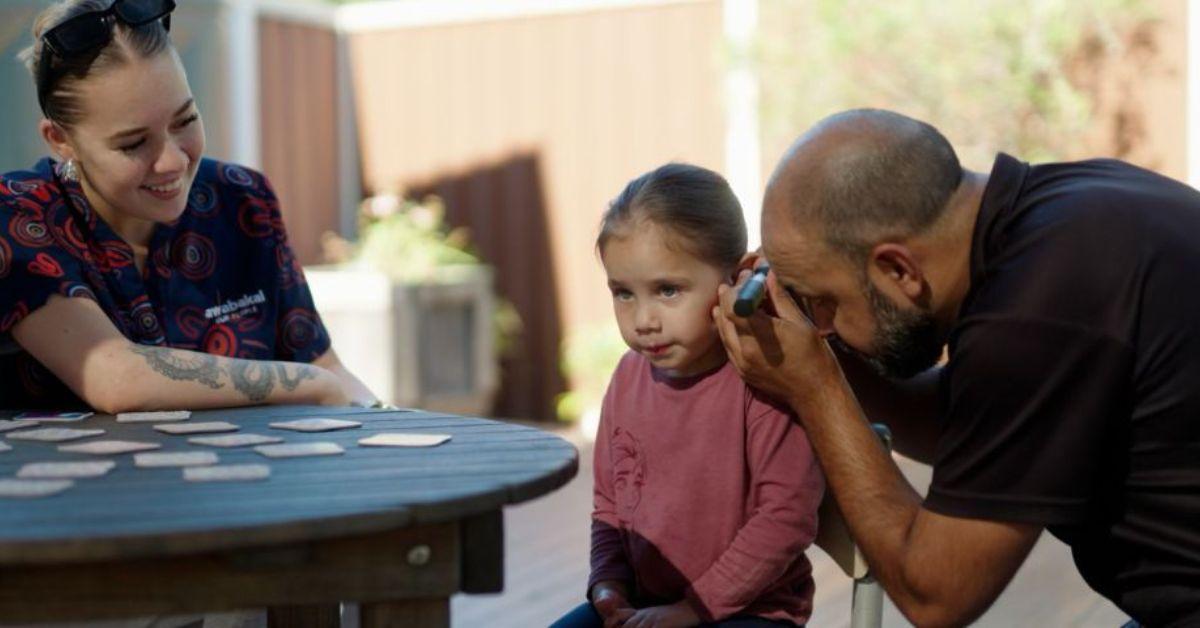By: Ben McEachen
Have you heard about the issues impacting the ears of First Nations children?
“Aboriginal and Torres Strait Islander children in Australia experience some of the highest rates of middle-ear infection in the world,” Kirralee Cross said in our interview.
Kirralee Cross is part of Hearing Australia’s First Nations Services Unit. Recently, Hearing Australia checked out the assessments of 19,000 First Nations children across Australia.
For our First Nations children, ear infections are typically more common and last longer. Some of the alarming findings include:
- More than 1/4 of children had undiagnosed ear disease
- 1-in-5 had undiagnosed hearing loss
- Children under 2 years had more ear trouble than older children, with those in remote locations having more problems than peers in regional or metro areas.
“Ear infections are very common in children but for our First Nations children, they start earlier, they [are] typically more often and last longer,” Kirralee said. “This can really have an effect on their ability to listen, connect and yarn with others.”

Many social and environmental factors contribute, including overcrowded housing.
“But the big one is the limited access to services.
“Middle-ear disease can be really hard to detect and there are not always symptoms.”
“That’s why we are encouraging parents, carers and those in the community to get their children’s ears checked regularly.”
Hearing Australia aims to reduce the rate of preventable hearing loss in our First Nations children by 50 per cent, by 2029.
Hearing Australia is responding to these ear issues in our Indigenous communities through its HAPEE program (Hearing Assessment Program Early Ears).
“The program offers free hearing checks to young Aboriginal and Torres Strait Islander children who are not yet attending full-time school, as well as providing ongoing support and advice for parents.”
“What Hearing Australia want to do is to close that gap, so our First Nations children have the same ear health and hearing outcomes as the general population.”
“Hearing Australia’s aim is to help reduce the rate of preventable hearing loss in our First Nations children by at least 50 per cent, by 2029.”
Article supplied with thanks to Hope Media.
All images supplied by Hearing Australia.

